Throughout much of this past spring, cities across North America looked largely deserted as physical distancing measures took effect due to the COVID-19 pandemic. Then George Floyd was killed by police in Minneapolis on May 25, and protesters filled the streets. Two days after Floyd’s killing, Regis Korchinski-Paquet fell to her death during an encounter with Toronto police. A demonstration on May 30 was called by the Toronto activist group Not Another Black Life to protest police violence against Black, Indigenous and other people of colour and the deaths of Korchinski-Paquet, Floyd, Breonna Taylor, Chantel Moore, D’Andre Campbell and many others.
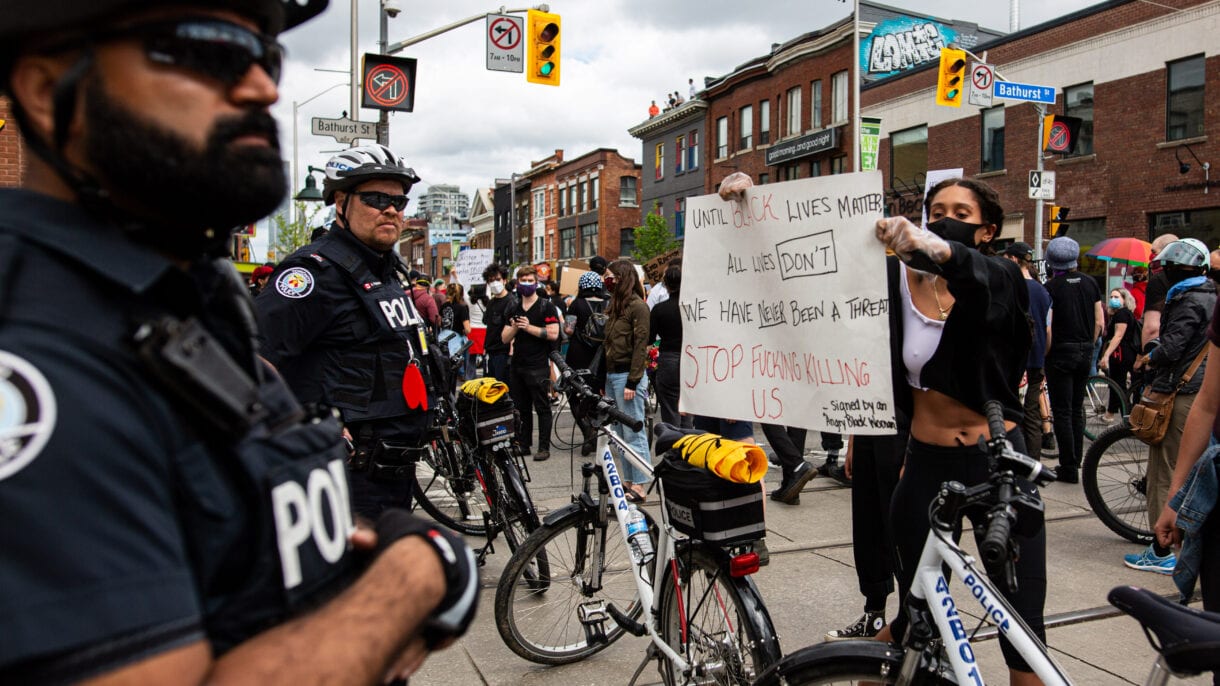
Credit: Nick Lachance
Thousands of Torontonians took to the streets to peacefully demand an open investigation into the death of Korchinski-Paquet, who died on May 27 after falling from the 24th floor of her apartment building while Toronto police were responding to a 911 call.
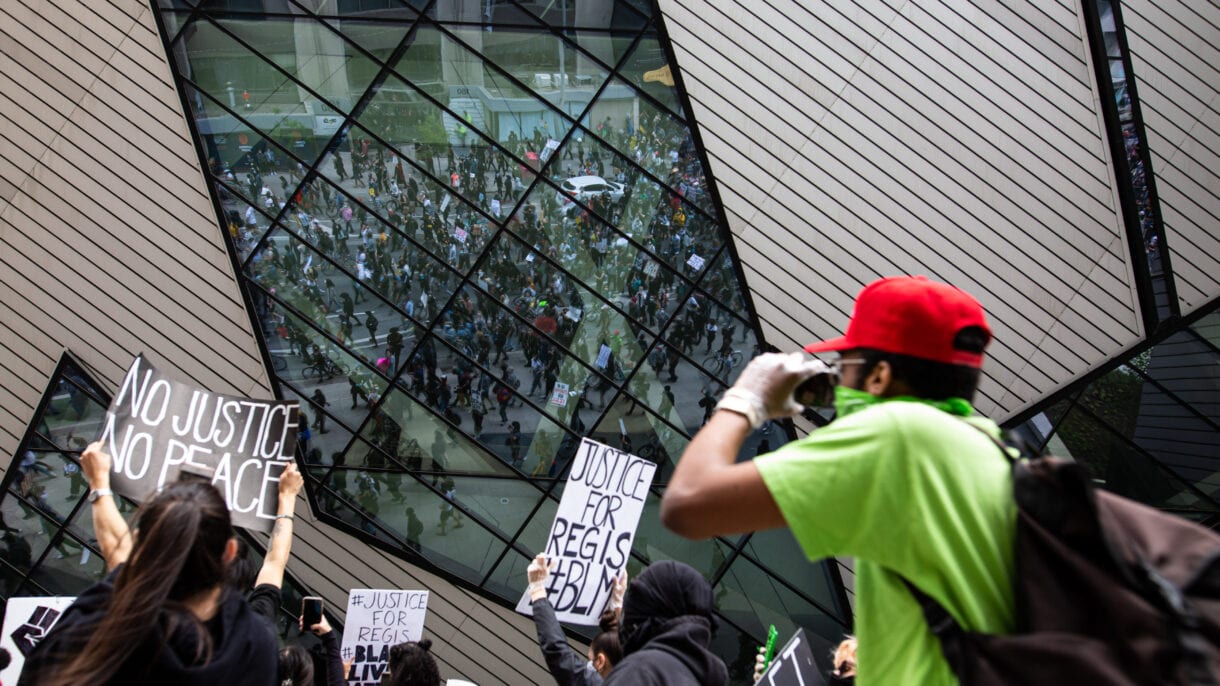
Credit: Nick Lachance
Korchinski-Paquet, who was Black and Indigenous, died after her family called police due to a domestic incident.
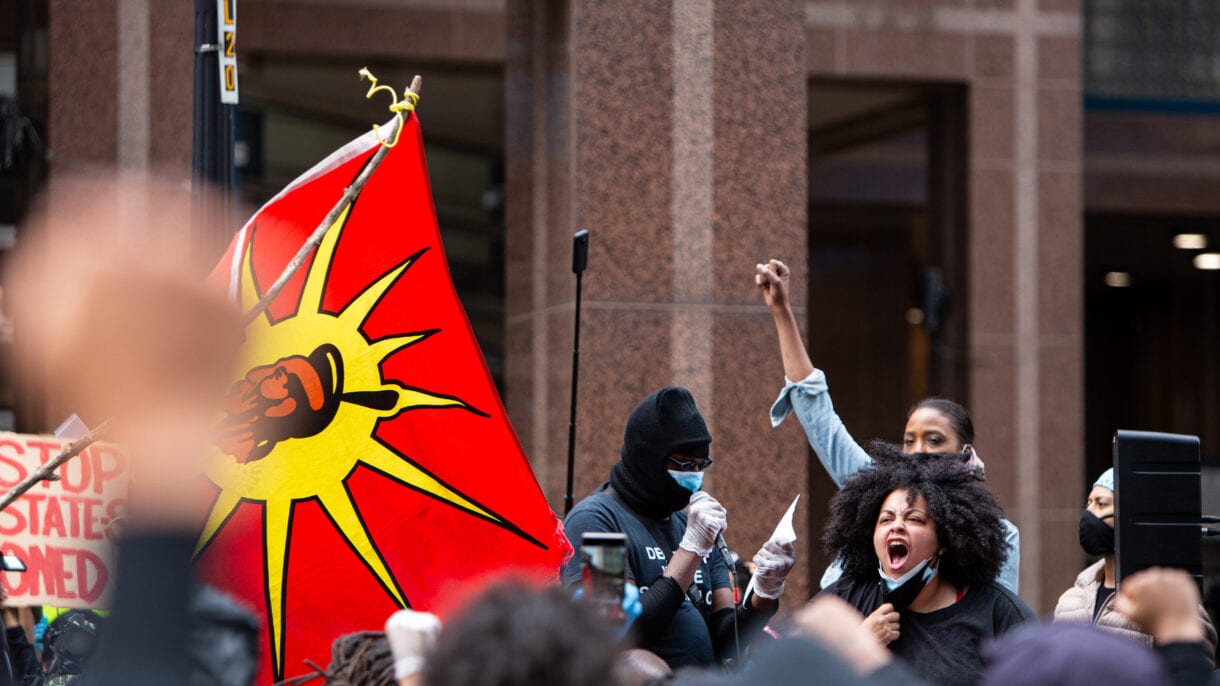
Credit: Nick Lachance
Followed by a heavy police presence, the protest wove from Christie Pitts Park, across Bloor Street, and ended in front of police headquarters on College Street.
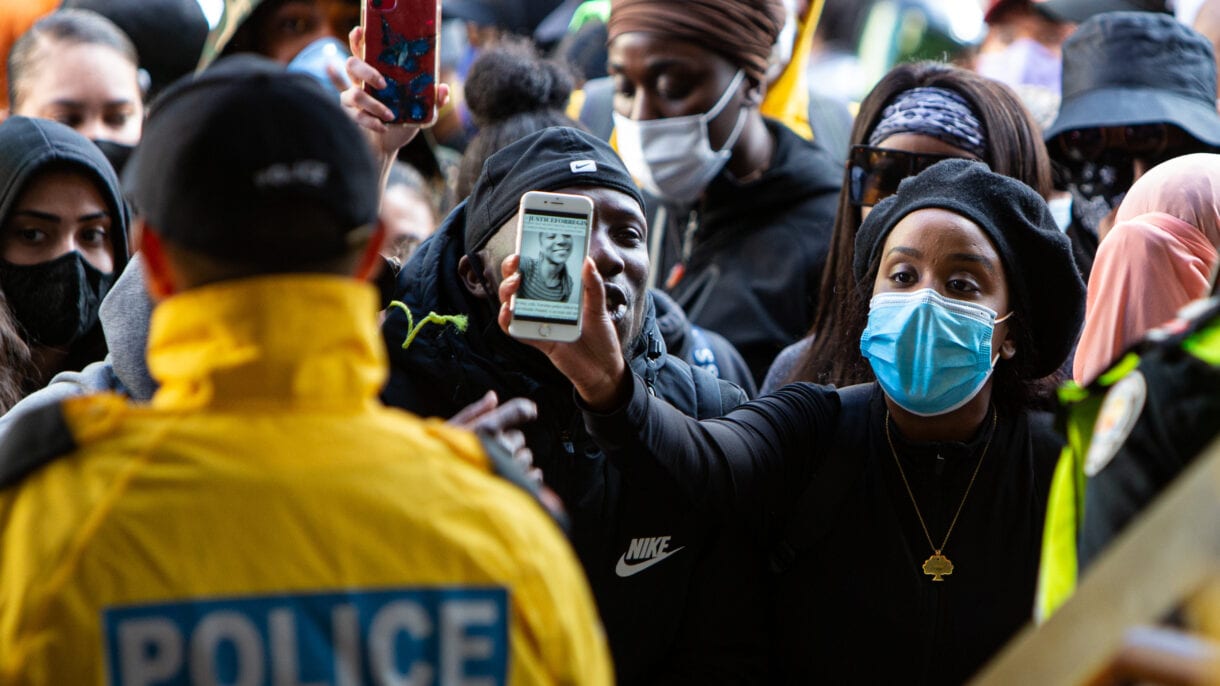
Credit: Nick Lachance
A smaller group of protesters stayed in front of police headquarters to vent their frustrations. One protester holds up a photo of Korchinski-Paquet to a Toronto police officer.
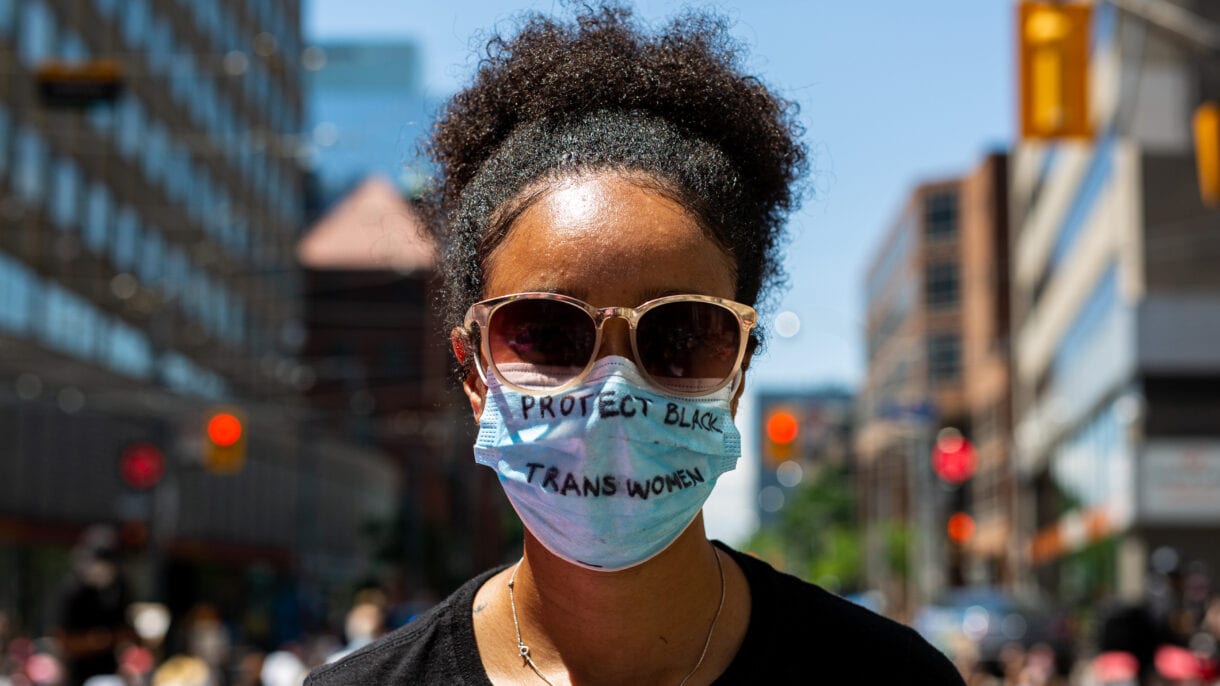
Credit: Nick Lachance
On June 19, Not Another Black Life led a sit-in that stretched from police headquarters on College Street, down Bay, ending in front of Toronto City Hall. The date is celebrated as Juneteenth throughout the U.S. and commemorates the end of slavery.
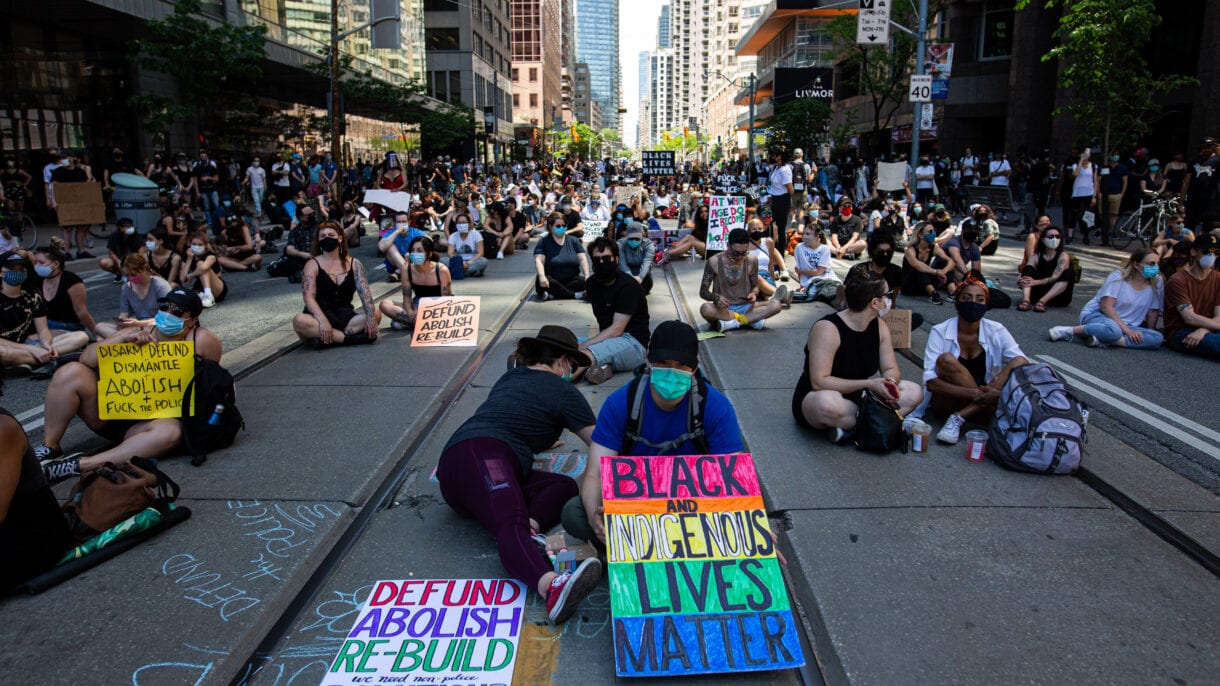
Credit: Nick Lachance
The sit-in focused around calls for the Toronto Police Service to be abolished.
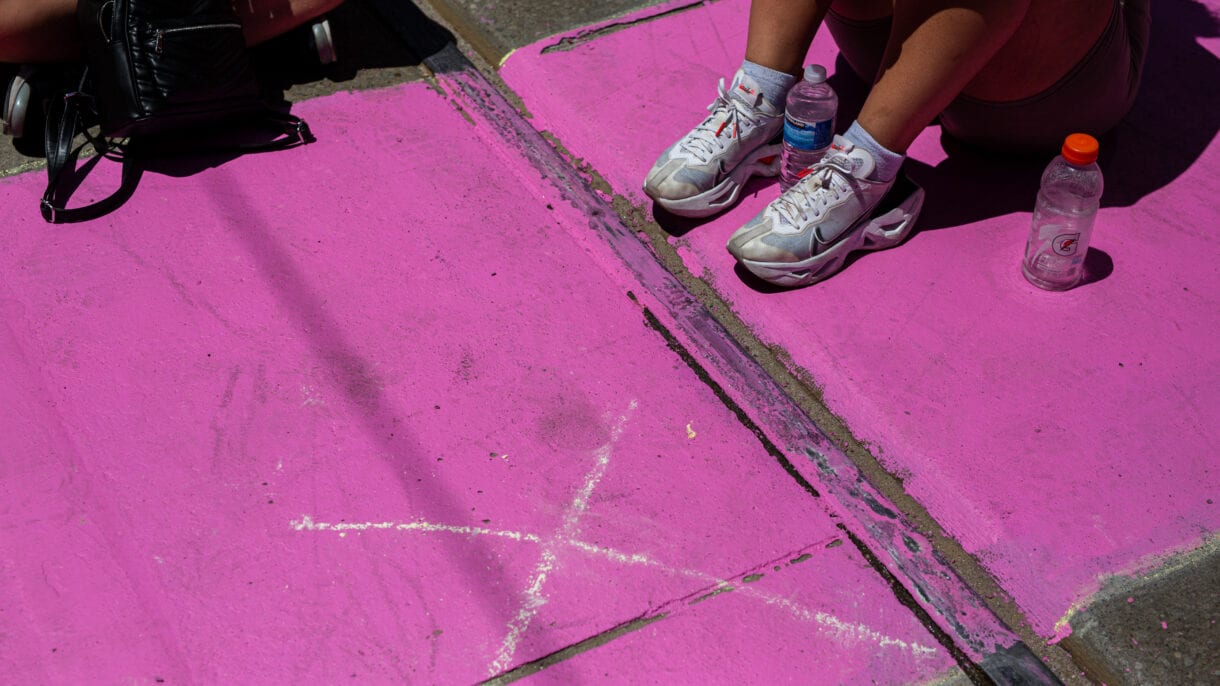
Credit: Nick Lachance
The event embraced physical distancing efforts: Chalk markers were placed along the street as the sit-in moved away from College down Bay Street.
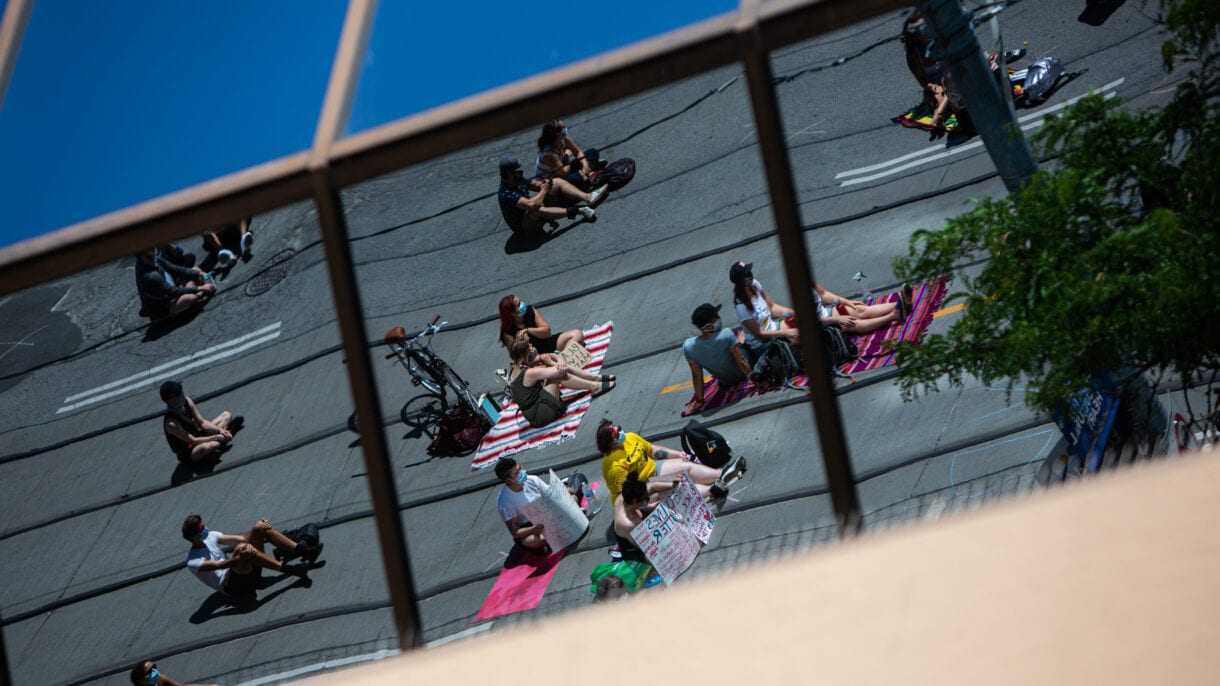
Credit: Nick Lachance
Thousands of people occupied all of Bay Street, from College to Queen, sitting in physically distanced groups.
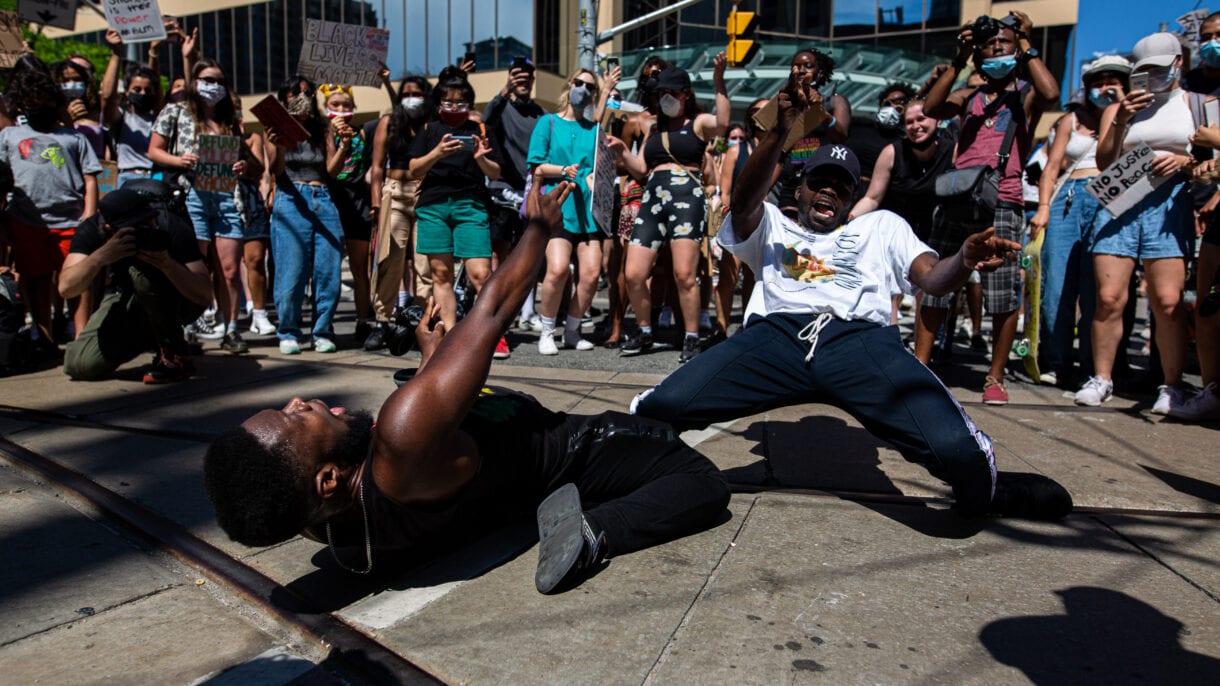
Credit: Nick Lachance
Speakers, poetry readings and dancing propelled the sit-in toward City Hall.
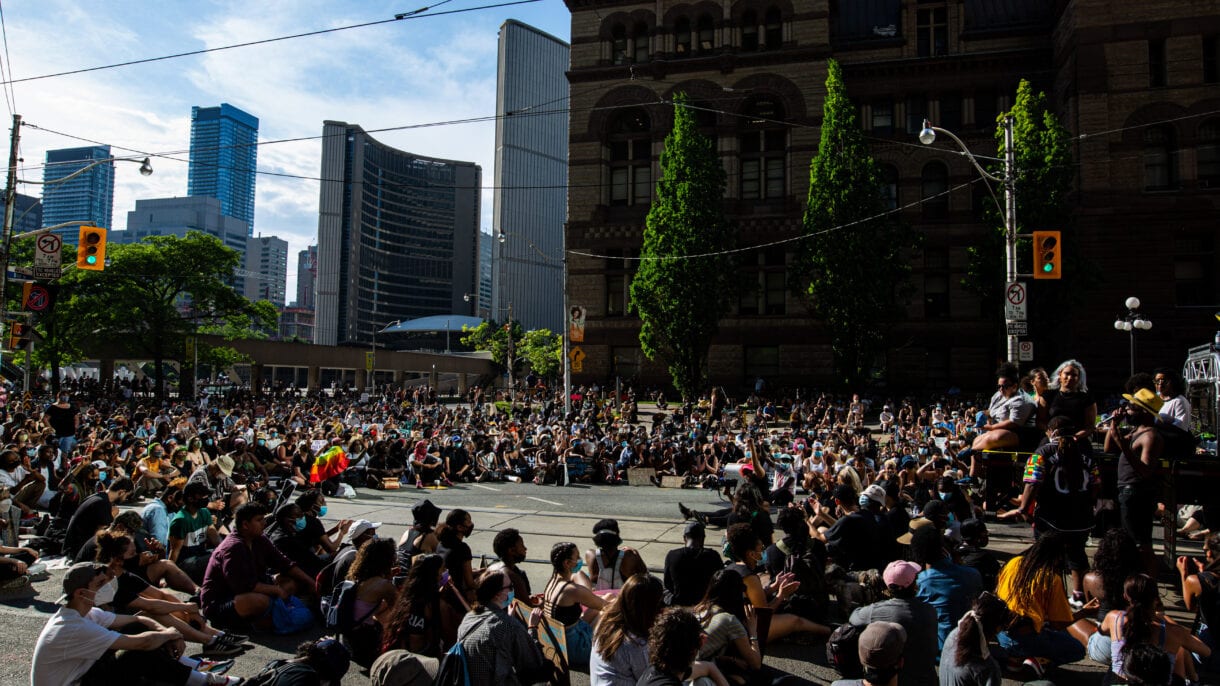
Credit: Nick Lachance
As the protest came to an end, organizers read aloud the names of many Black, Indigenous and other people of colour who have been killed by police in Canada in recent years.
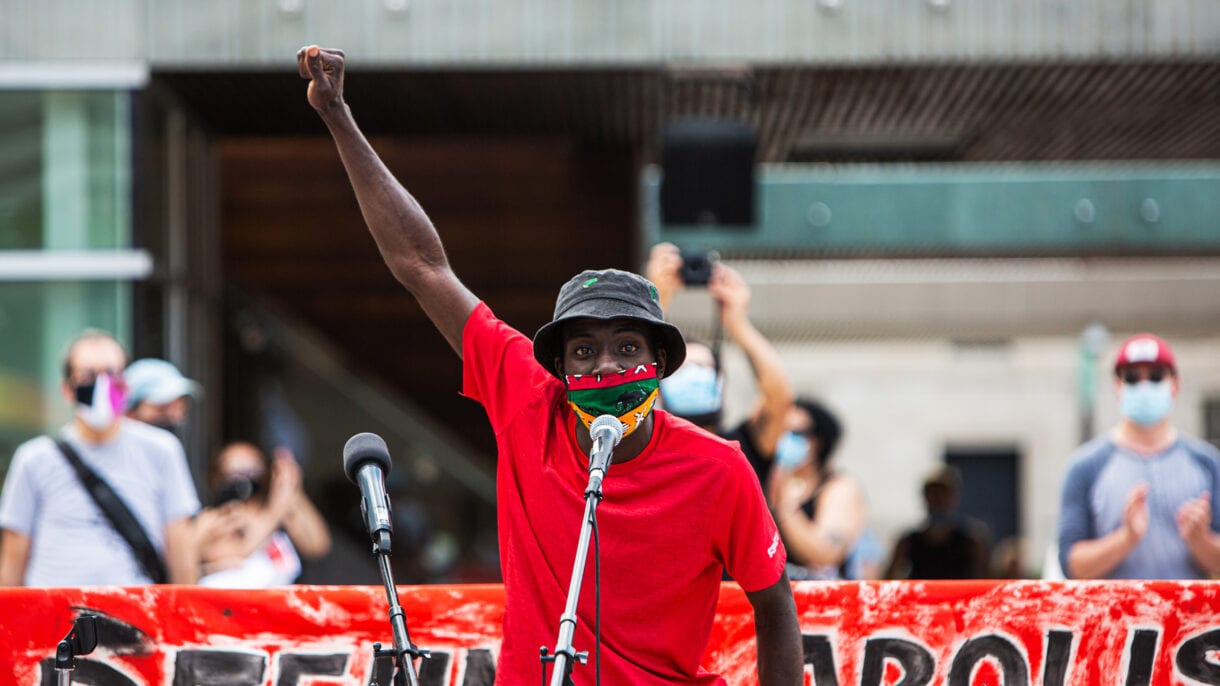
Credit: Nick Lachance
The Abolish Police in Canada: Pride Rally and Teach-In took place on June 28 at Nathan Phillips Square in front of Toronto City Hall. The event was organized by the No Pride in Policing Coalition, a group that formed to support the demands raised by Black Lives Matter Toronto after that group’s appearances at Pride in 2016 and 2017. Activist and journalist Desmond Cole spoke at the event.
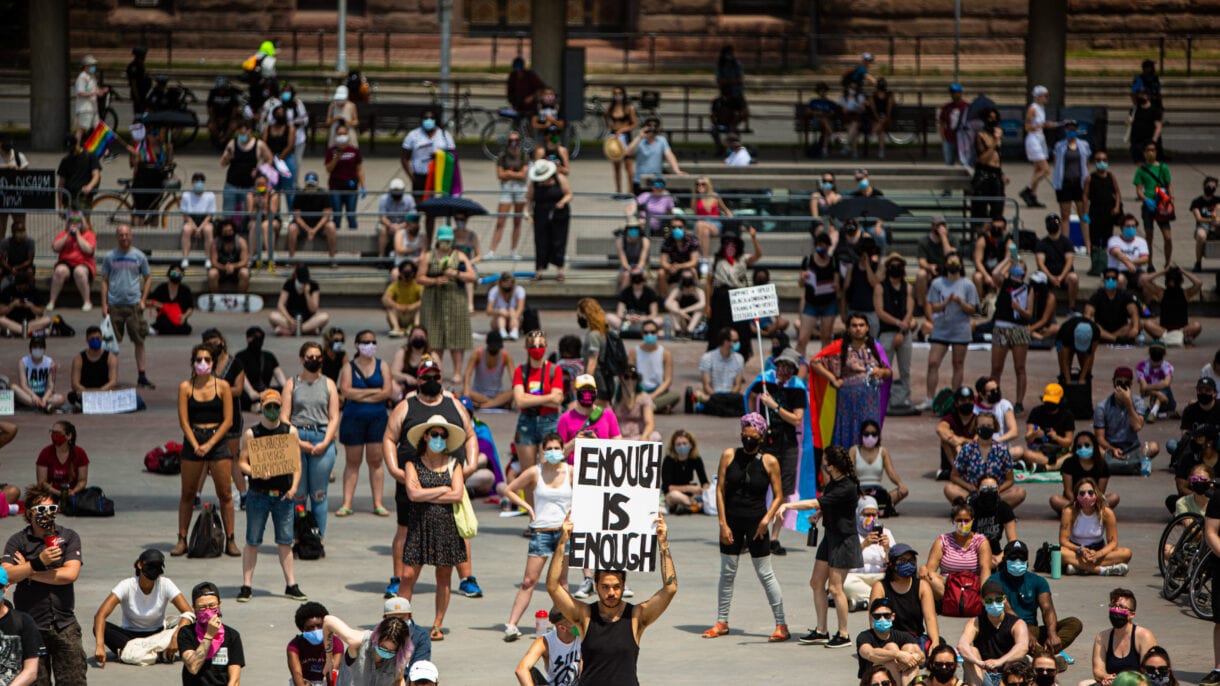
Credit: Nick Lachance
The No Pride in Policing Coalition called for an immediate 50-percent cut to the Toronto police budget as a first step toward abolishing the police.
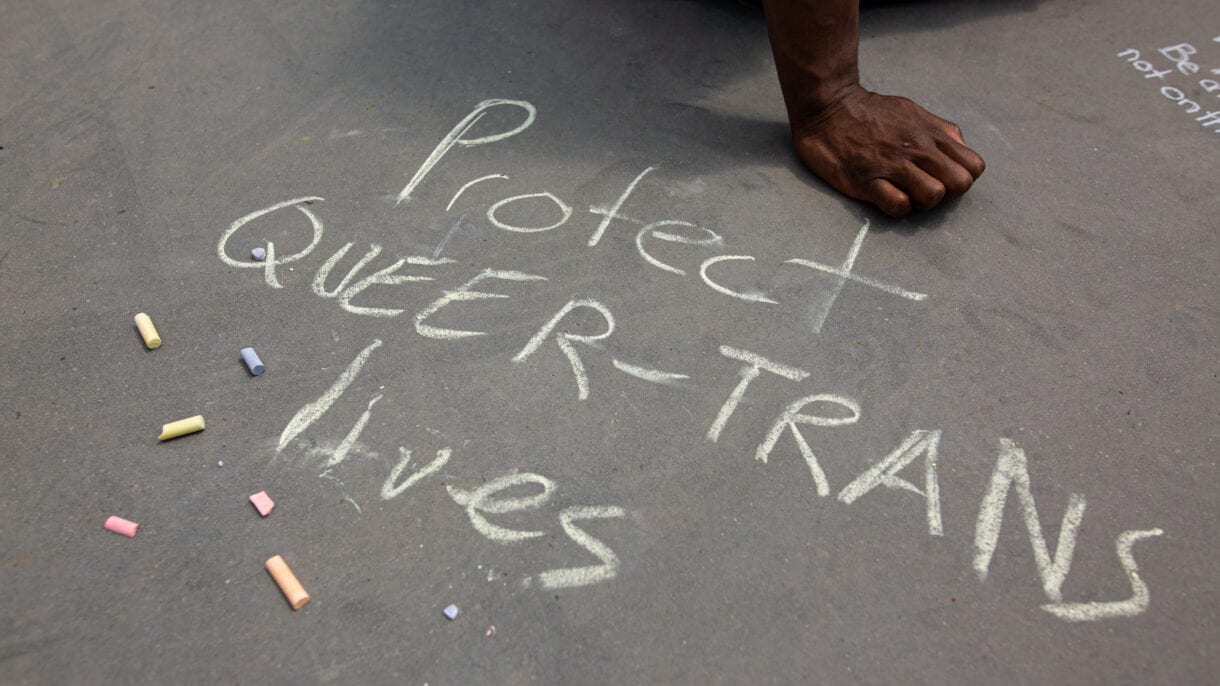
Credit: Nick Lachance
Attendees were asked to write what they learned from speakers, or hoped for, on the ground in chalk.
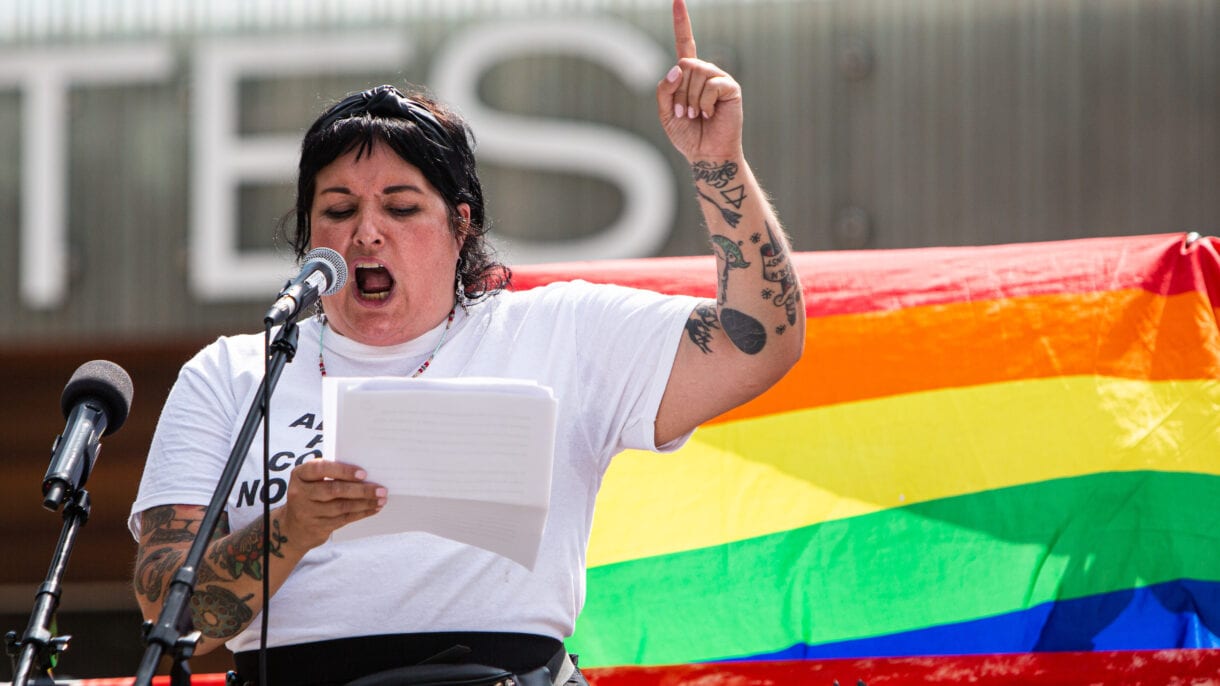
Credit: Nick Lachance
Harm-reduction worker and community activist Zoë Dodd spoke about the negative effects of policing on people dealing with addiction issues.
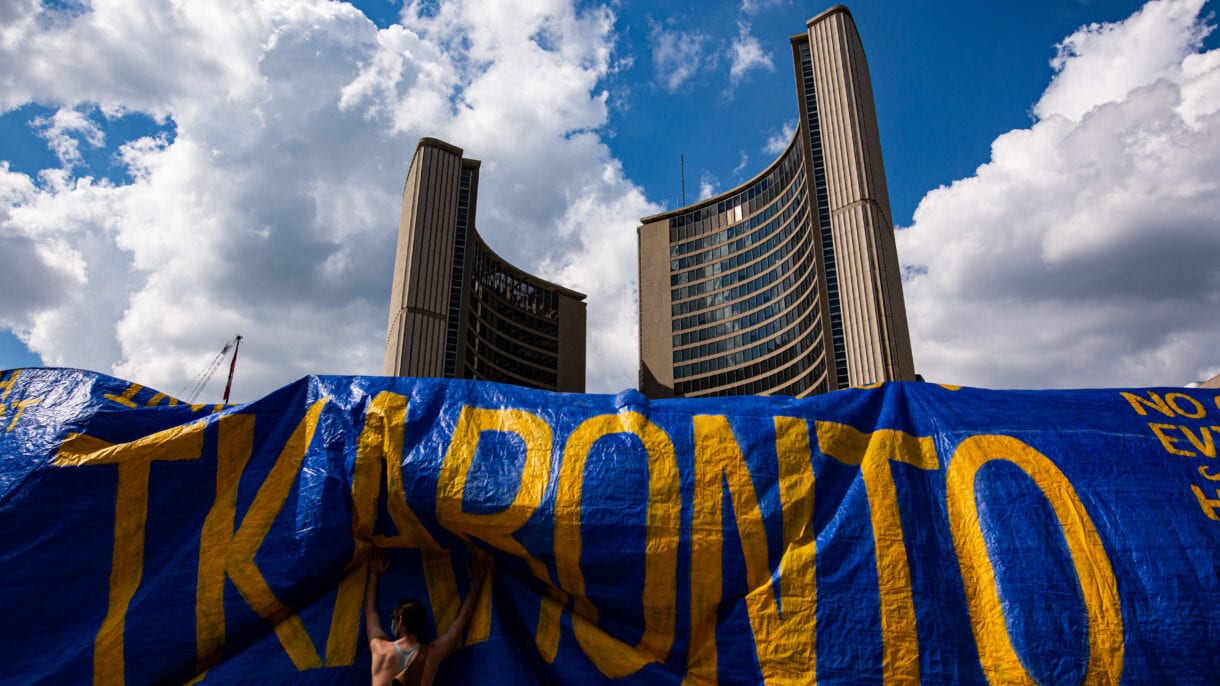
Credit: Nick Lachance
AIR (Afro-Indigenous Rising) protesters placed a tarp with the word “Tkaronto” over the Toronto sign in front of City Hall. Tkaronto is a Mohawk word meaning “where there are trees standing in the water,” and is considered the original name of Toronto.
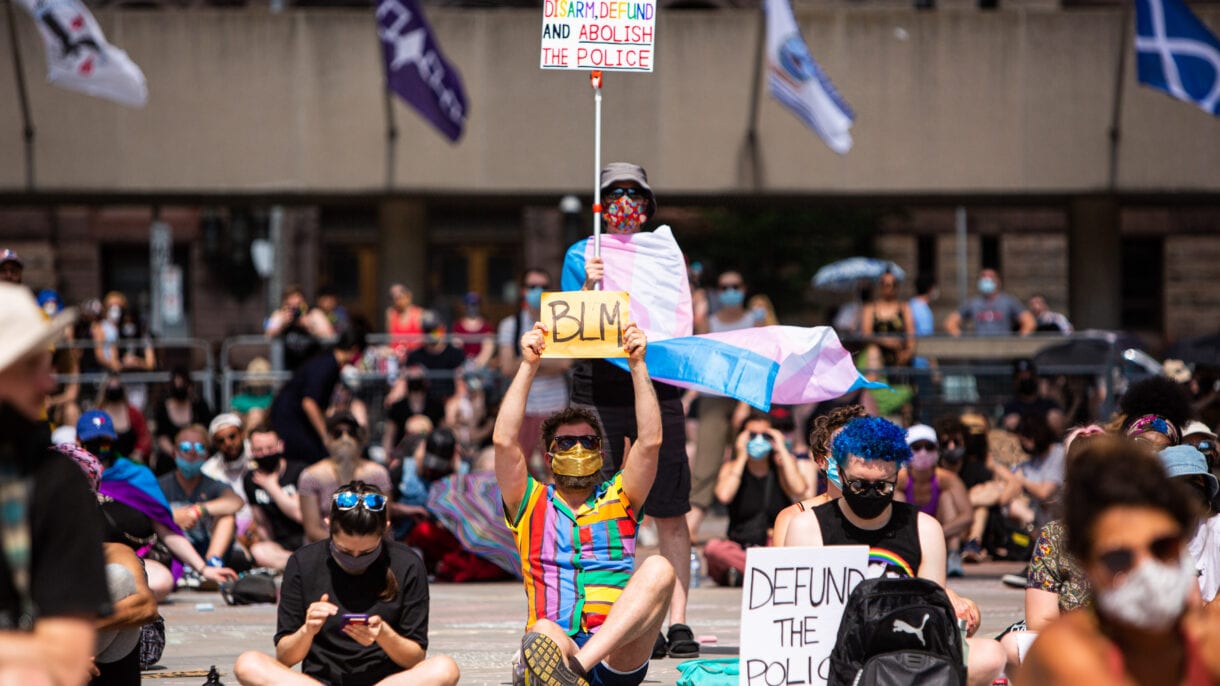
Credit: Nick Lachance
Approximately 2,000 people came out in the sweltering heat to attend the Pride Rally and Teach-In.
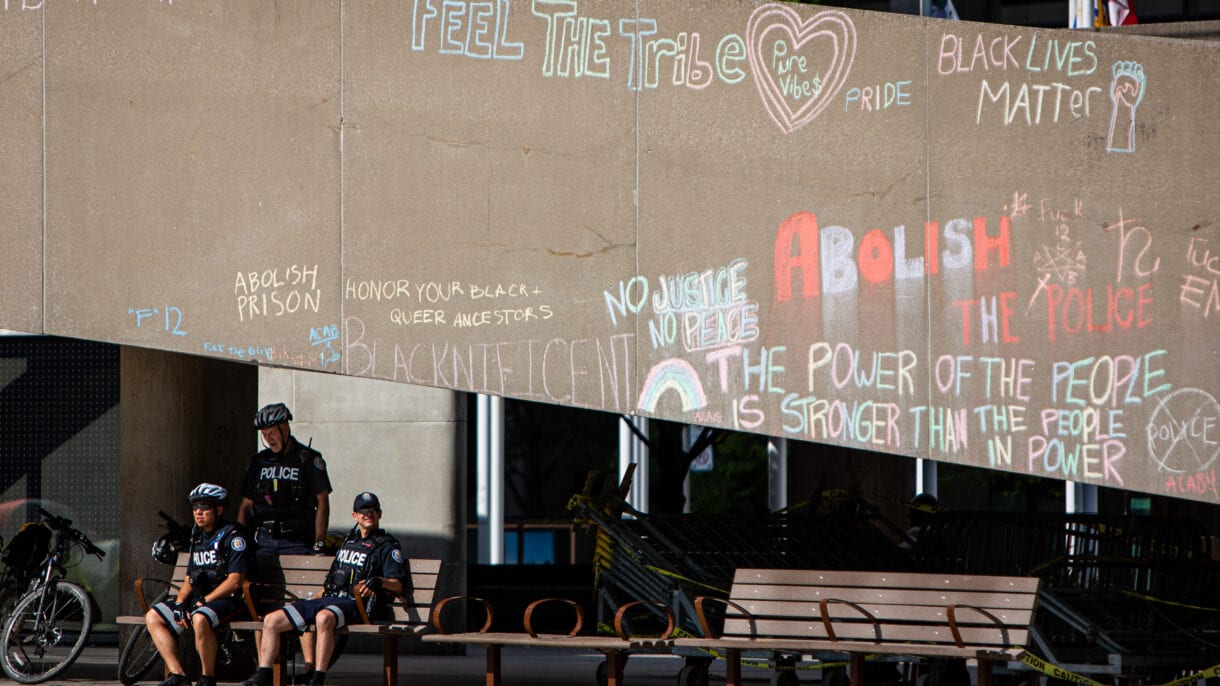
Credit: Nick Lachance
Police officers hovered around the edges of Nathan Phillips Square throughout the afternoon.
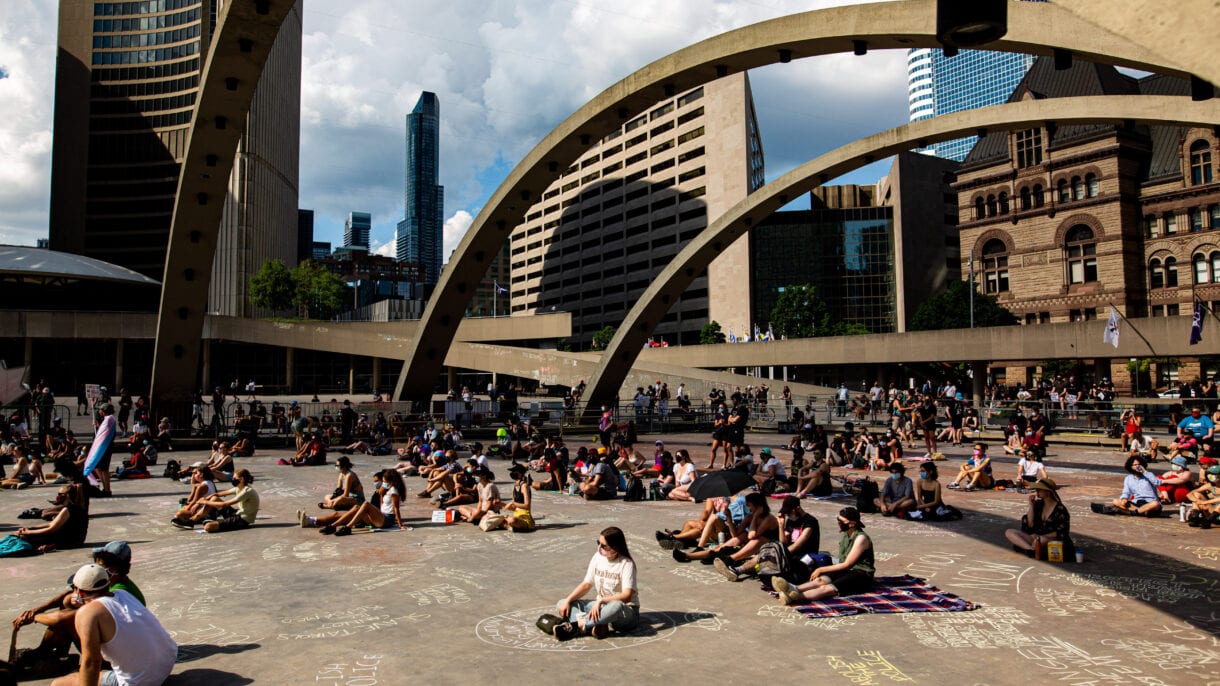
Credit: Nick Lachance
Over six hours of speeches, Nathan Phillips Square gradually transformed from a blank slate to a canvas filled with people and their hopes for a better city.
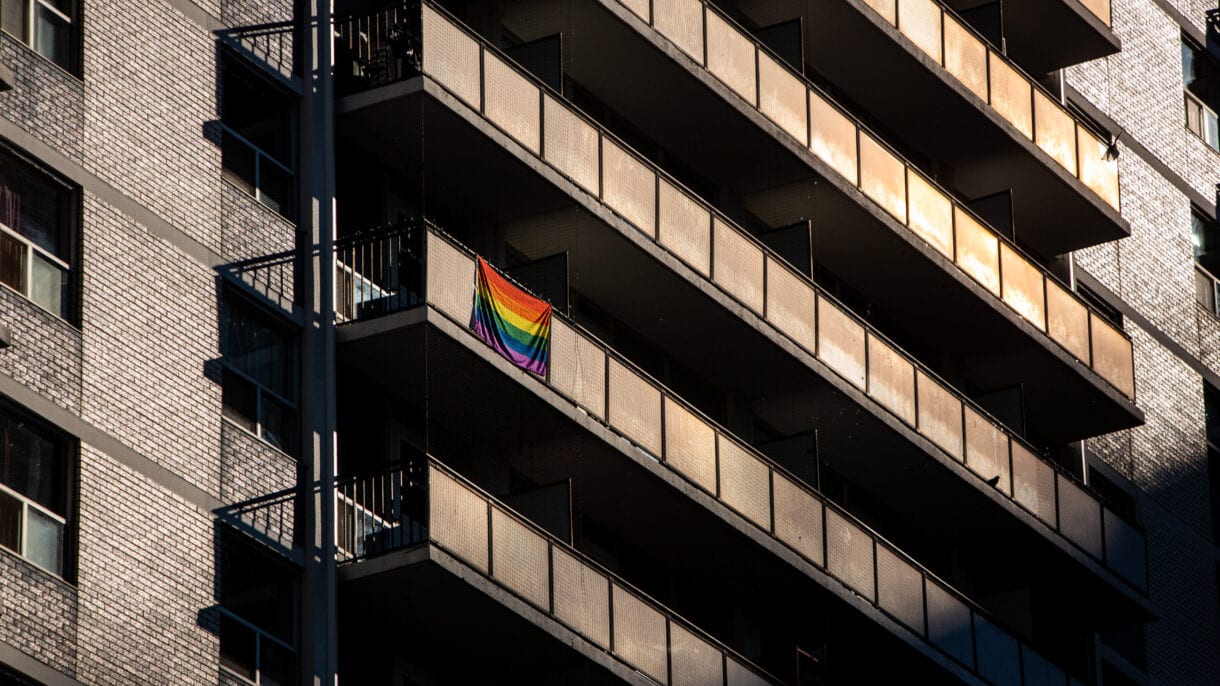
Credit: Nick Lachance
In Toronto, LGBTQ2 folks play a huge role in these movements fighting against racism and police violence. The teach-in took place on what would have been Pride Day but, of course, the big parade and celebration were cancelled due to COVID-19. A few blocks away from the teach-in, in the Gay Village, located in the Church and Wellesley neighbourhood, small groups of queer and trans folk gathered to mark the occasion, while a lone Pride flag hung off a balcony in the sunset.
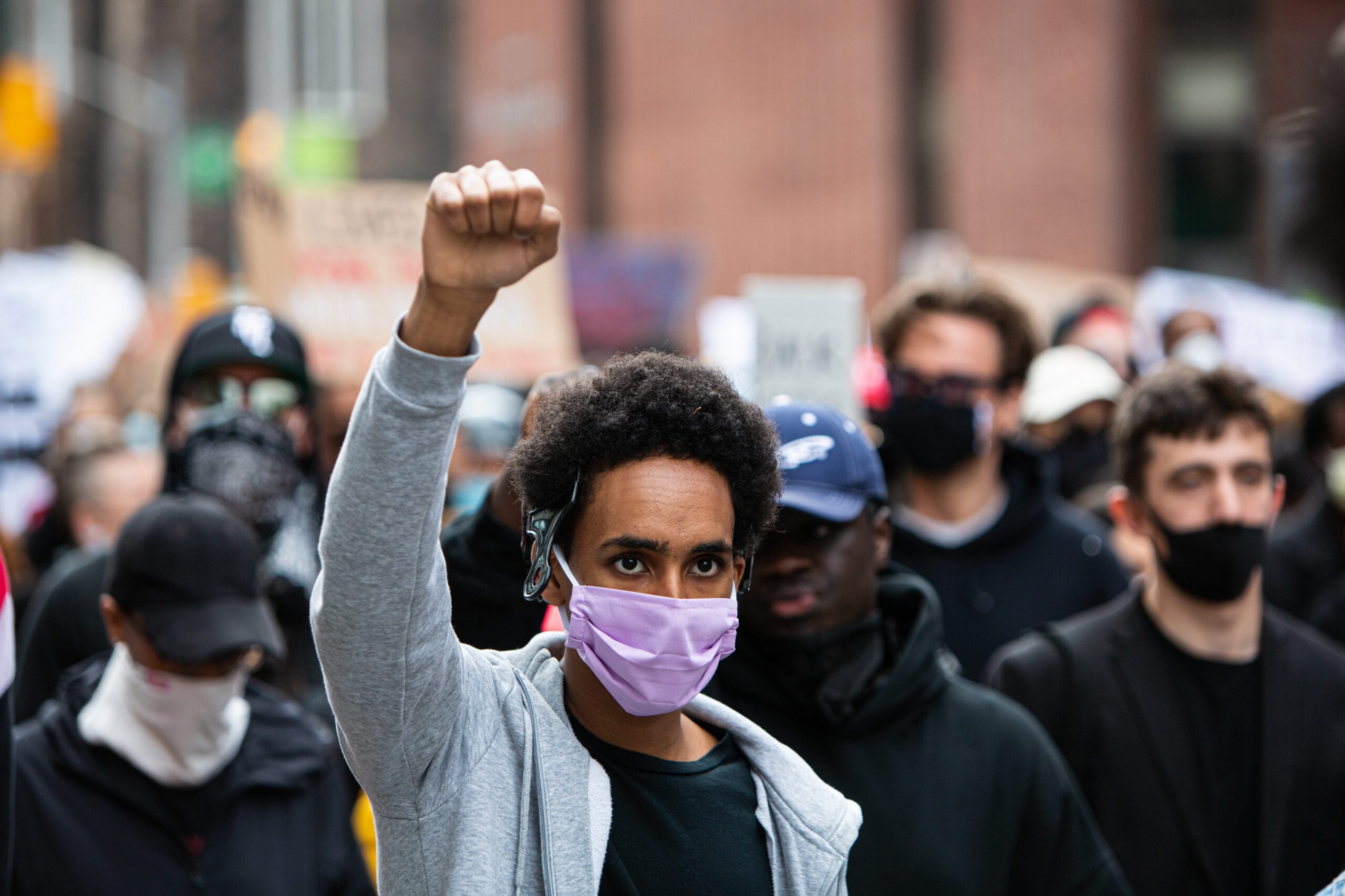
 Why you can trust Xtra
Why you can trust Xtra


